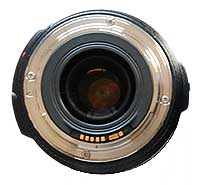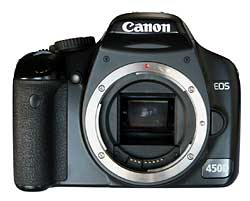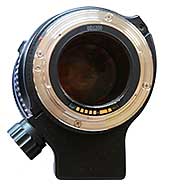Contact Details: Scotch Macaskill, Dirt Road Traders, Currys Post Road, Howick, KwaZulu-Natal, South Africa. Tel: +27 (0)82 578 2329. Privacy: Your privacy is guaranteed. See our Privacy Policy for more. This site accepts advertising and other forms of compensation - see Disclosure and Advertising for details. Site updated: 2022. Copyright © 2002 - 2022 Scotch Macaskill

| ||||||||||
|
||||||||||
|
See Also: |
Canon EF Lenses
Canon EF lenses are inter-changeable lenses that fit Canon's range of EOS single lens reflex (SLR) cameras -- from EOS 35mm film cameras to the latest EOS digital cameras. "EF" stands for electro-focus and this range of lenses was introduced in 1987 to replace Canon's FD lenses. EF lenses have an electronic mount, while the FD lenses had a mechanical mount and were designed for use on older film cameras such as the Canon AE-1 and Canon A-1.
Canon EF lenses are auto focus, with the focus control motor built into the lens rather than the camera body, so no mechanical connectors between camera and lens are necessary. The electronic mount that joins a Canon EF lens to the camera body allows for silent, seamless communication between body and lens, utilizing the power from the camera's battery. Auto focus, aperture control, depth-of-field preview, and image stabilization are all controlled from the camera via these electronic mounts between body and lens. While Canon's digital SLR cameras might at first glance appear radically different from its film cameras -- with a CMOS digital sensor and
Digic micro processor replacing film -- fundamentally they are still light-tight boxes that capture an image on light sensitive material via a lens.
This has allowed backward and forward compatibility between Canon EOS cameras and EF lenses. I can happily use my EF 70-300mm f4.5-5.6 IS USM tele zoom lens, introduced around 2005, with my old Canon EOS 600 35mm film camera that I bought in 1989. Similarly, I can use my ancient Canon EF 80-200mm f/2.8 zoom lens (known as the "magic drainpipe -- see right), bought in 1990, with my Canon EOS 450D digital SLR (Digital Rebel XTi), only introduced some 18 years later. This compatability means that Canon EF lenses can be used with any of the following camera bodies:
The full range of Canon EF lenses is vast and includes more than 60 lenses, from the EF 15mm f/2.8 Fisheye to EF1200mm f/5.6 super telephoto. Prime or Zoom LensesEF lenses can be broadly classified as:
Zoom lenses, because of their great versatility and value for money, are a popular choice among photographers, particularly amateurs. Instead of carrying a bag with three of four prime lenses to cover a range of focal lengths, a photographer can carry two zoom lenses that cover from wide angle to telephoto, e.g. 24-70mm and 70-300mm. Lens technology has improved markedly in recent years and today's zoom lenses can produce images of excellent quality that's more than adequate for most users. Professional photographers nevertheless still use prime lenses where feasible, mainly because of their faster maximum aperture, allowing use in low light. No zoom lens can equal the f/2.8 aperture and 400mm focal length of Canon's EF 400mm f/2.8, or the EF 600mm lens's f/4 maximum aperture. Similarly, Canon's prime standard (50mm) and wide angle lenses offer unrivalled image quality at wide maximum apertures. Canon's top-of-the-range EF lenses carry the "L" designation and are distinguished by the red circle around the lens barrel. These professional lenses offer the ultimate in image quality, with protection against weather and aging and include special optical materials such as fluorite, ultra-dispersion (UD) or super UD elements. They are solidly built, heavy, and expensive. APS-C Size SensorsCanon's entry-level and "prosumer" digital SLR digital cameras have a sensor that's smaller than the 36 x 24mm size of a full-frame digital sensor or 35mm negative. These APS-C sensors are 22.5 x 15mm in size, so the image cast by the EF lens, designed to cover a larger area, appears cropped on the smaller sensor. The cropping effect is referred to variously as "crop factor", "lens magnification factor" or "focal length conversion factor". In practice, fitting a Canon EF lens to a digital camera with an APS-C sensor will appear to magnify the image, mimicking what would happen if you used a 1.6x tele converter or switched to a lens that's 60% longer. To provide photographers with more wide angle choice, Canon developed their range of EF-S lenses specifically for use with the Digital Rebels and EOS 20D to 50D cameras. Return to Canon Lens Reports |
|||||||||
|
|
||||||||||


